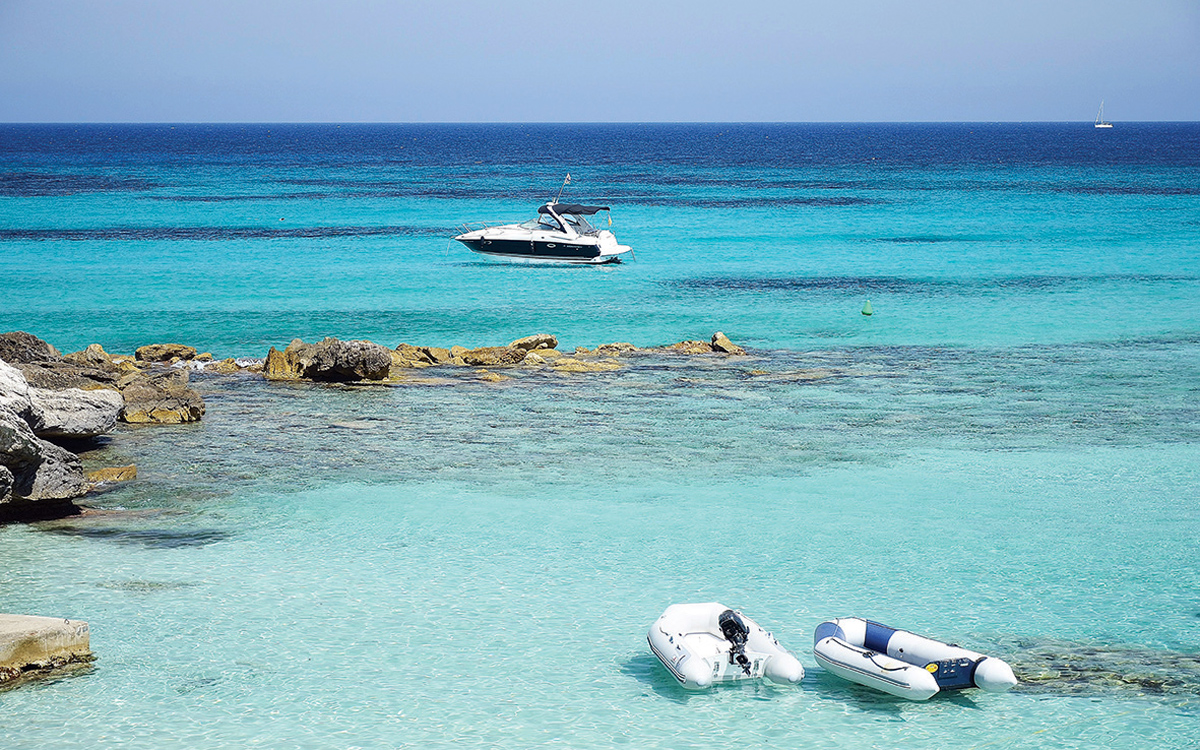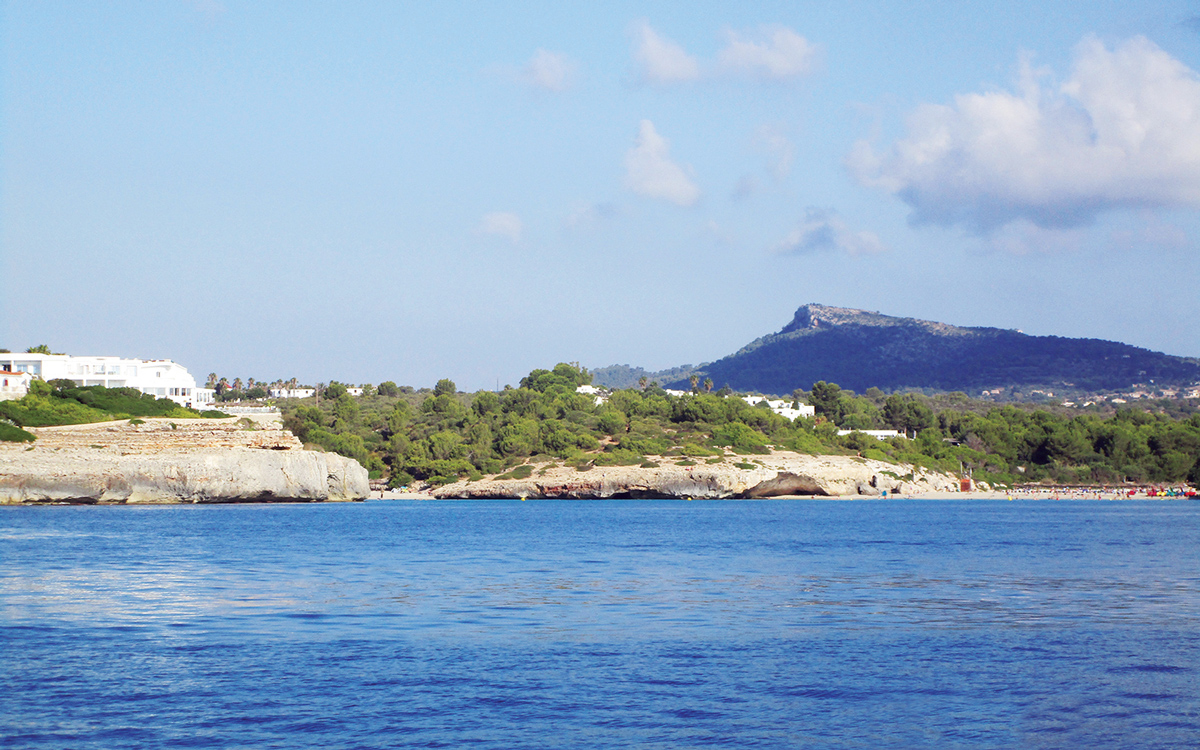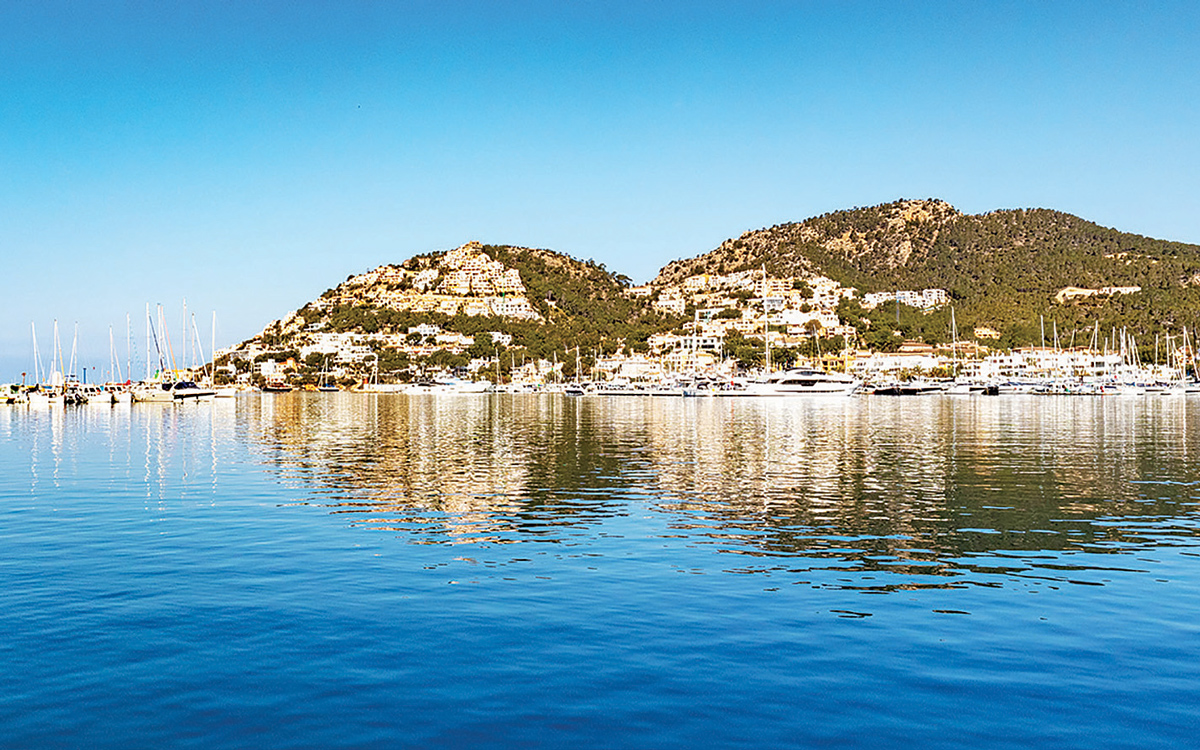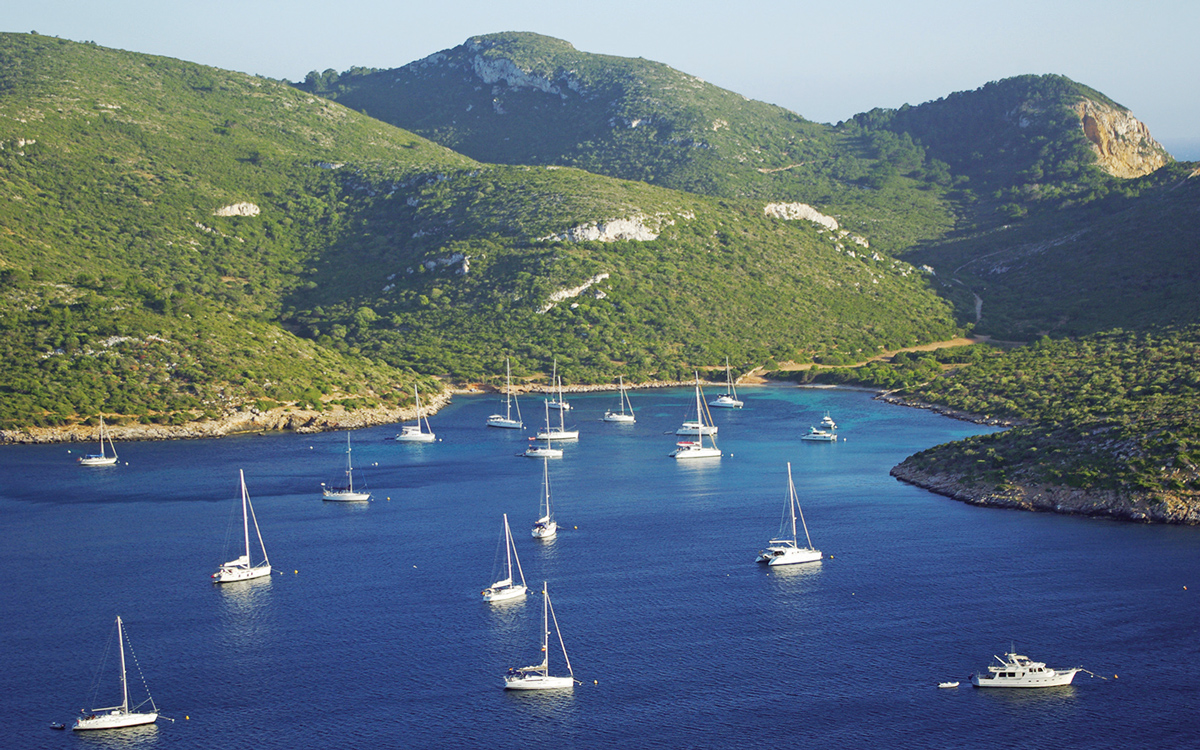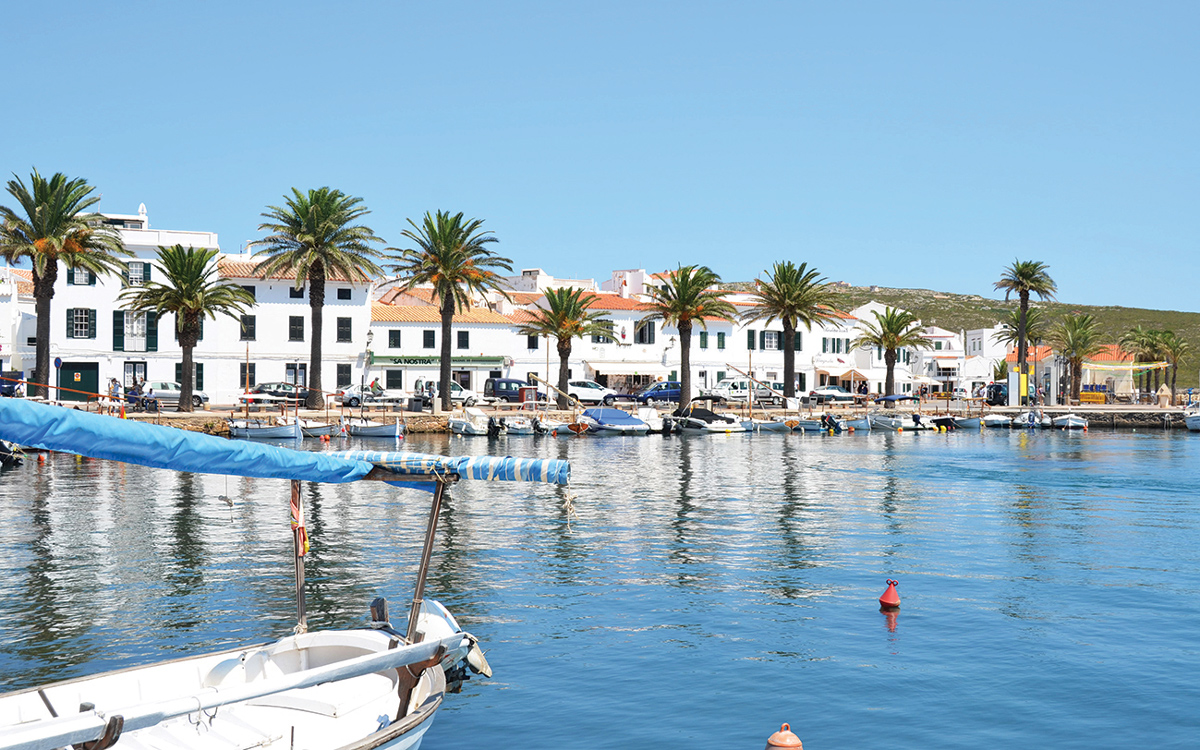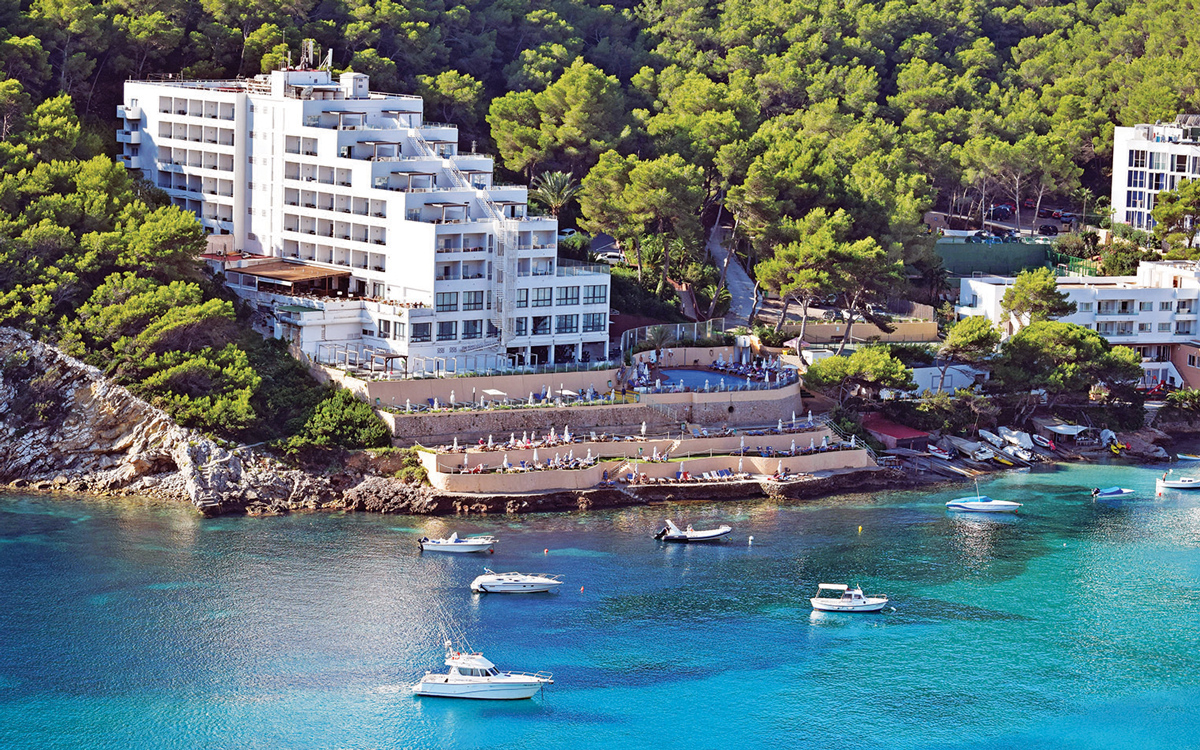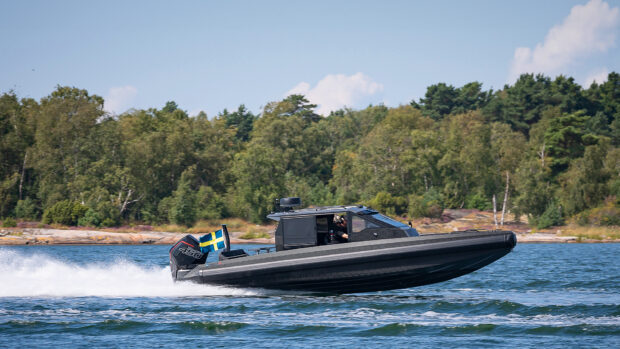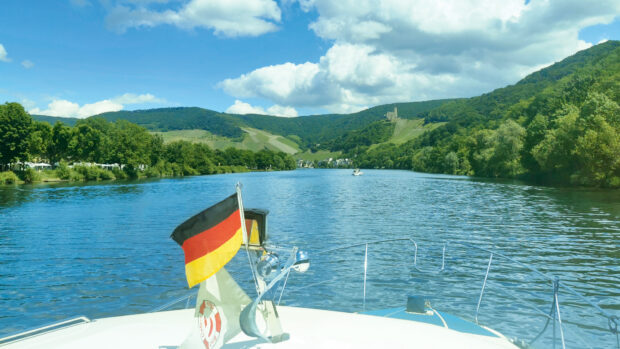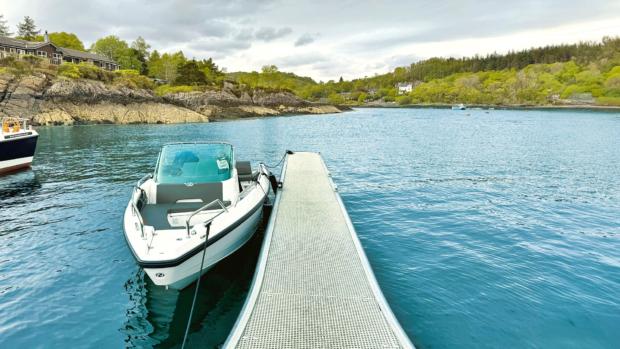Having cruised the Balearics for more than 30 years, Peter Cumberlidge has dropped anchor in some spectacular bays. Here are his favourites...
Scattered up to 100 miles off the Spanish mainland, the Balearic Islands have some of the best cruising in the Mediterranean, particularly for fast motor boats that can cover miles quickly along the wonderful stretches of rugged coast.
Mallorca has been a popular package holiday destination since the 1960s, yet despite its mass tourism the island charm remains. The climate is often pretty hot in high season, but sea breezes keep life comfortable under a bimini or awning.
The capital Palma commands the head of a grand bay with its magnificent, golden stone cathedral as a focal point. There are smart marinas in and around the city, and plenty of smaller yacht harbours elsewhere, but you can still anchor in the many beautiful rocky inlets around Mallorca known as calas, which dramatically indent the whole coastline. In the north, there are remote villages hardly touched by tourism, where simple rural traditions carry on regardless.

Ibiza’s Cala Llonga is a blissful anchorage with some patchy development and a naturally welcoming atmosphere
The smaller islands of Menorca and Ibiza are also well endowed with calas, especially quieter Menorca, which I much prefer. Ibiza has a reputation for glitzy clubbing nightlife, but clear of the main town you can always get away from it all by boat – the finest form of independent travel ever invented.
In this article I have chosen my ten favourite calas in the Balearics, mostly around Mallorca, which is the hub of motorboat activity and berthing, and a few from Menorca and Ibiza. Picking ten from such a wealth of stunning inlets has certainly not been easy! This is a very personal selection, which tends to reflect my cruising preferences for peace and seclusion wherever possible.
Many anchorages around the Balearics are only suitable as daytime stops in fair weather, but several in my ten are perfect for overnighting. Local boat owners will have their own special haunts, but these are mine and I hope you enjoy visiting them.
Article continues below…

VIDEO: Mallorca to the UK in a Princess V39 – Part One
In the first of a new video series, John Boyle sets off from Mallorca in his new Princess V39 and

10 idyllic island retreats to explore by boat
Mallorca
Cala de sa Font
This delightful inlet is on the east coast, barely two miles south of Ratjada – a holiday town with a small marina. In Sa Font you anchor off a white sandy beach in clear turquoise water with 5-6m depth. The surroundings aren’t completely wild – there’s a beach club and some apartments ashore – yet the place has restful vibes and we’ve stayed here overnight in quiet weather.
Like many such inlets around Mallorca, Cala de sa Font was once a picturesque fishing village. There are no fishing boats here now, but you can imagine the scene in those early days. I still have old postcards showing traditional wooden llaüts moored in this peaceful spot.
The beach is crowded in high season but it’s fun to watch all the action from the anchorage. The snorkelling is superb and you’ll see plenty of fish as you swim about, particularly further out near the rocky north side.
It’s best not to take the outboard with you when landing. Carry the dinghy to the head of the beach and keep the oars with you – young children like nothing better than bouncing about in a dinghy. You’ll get a cold drink and a tasty bite to eat at the beach bar. The nearest town is Capdepera, a couple of miles inland.
Cala Mondragó
A mile west of Marina Cala d’Or, Mondragó satisfies all my needs for an anchorage. Enclosed by low cliffs with two arms and two beaches at its head, this unspoilt inlet is a swimmers paradise and the beaches are usually buoyed off in summer. The water is a stunning cyan blue and you anchor in about 5-8m depth.
I like coming here out of season if the weather is quiet, when Mondragó feels like a slice of old Mallorca. There are cafés ashore, but the vibes are calm and it’s good not to be surrounded by apartments. Behind the beaches are fragrant Mediterranean pine trees. The cala is open to the east, but easterlies are quite rare and it’s usually cosy here overnight. Then, when the water is still, there is no finer anchorage around the island.
Nearby Marina Cala d’Or, which is actually in Cala Llonga, is snug in all weathers and one of the most popular. It is often full in season, but the two inlets east of the marina are worth visiting.
Cala Llombards
Sometimes spelt ‘Llombarts’, this lovely spot is four miles south-west of Porto Petro, itself an attractive cala with a marina on the north-west side and some brightly painted fishing boats. Cala Llombards’ rocky sides are patched with maquis and have great snorkelling caves.
The water is glorious and there are only a few, mostly deserted old houses in the cala. Beyond the head of the inlet, a large, stately villa looks out from on high. The beach café is low-key, but in any case you don’t lie that far in. There are sometimes visitor buoys, which take up the best inshore anchoring spaces. The old stone houses, called escars, are reminders of the days when fishermen worked here.
Island of Cabrera
Lying about six miles south-west of Cala Llombards, this intriguing island has a sublimely peaceful cala on its north-west side. It’s peaceful because Cabrera is a nature reserve controlled by the Parque Nacional de Cabrera. Boat owners must have written permission from Parque Nacional before visiting.
Cala Cabrera has 50 visitors’ moorings and no anchoring is allowed, so only 50 boats can stay here at any given time, which is itself a rare luxury. Although the whole business of getting a permit sounds a bit of a fuss, it is certainly worth doing for the privilege of lying in the wild surroundings of this impressive natural harbour, literally isolated from the outside world.
No speedboats or PWCs are allowed and the soothing atmosphere is rigorously guarded. There’s a five-knot speed limit round the island and a two-knot limit in Cala Cabrera. You’ll see a rich variety of seabirds, including shearwaters, ospreys and cormorants. Ashore there are walking trails through the steep sloping woods that enfold the bay, where you’ll experience superb panoramic views.
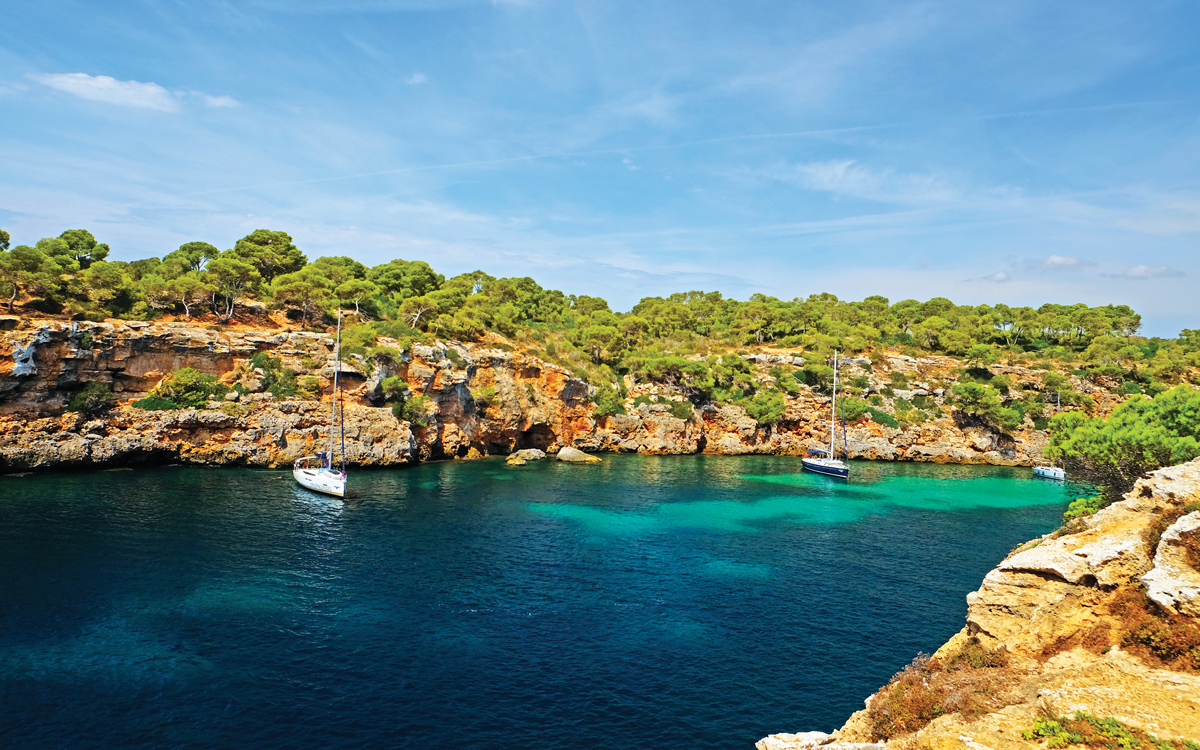
Sharing an entrance with tiny Cala Beltran, Cala Pi is a perfect natural harbour with high cliffs and a white sand beach
Cala Pi
Despite being popular, I’ve included this beautiful south coast inlet because it’s definitely worth visiting if you haven’t been in before. It is thought to be the oldest settlement in Mallorca and the steep cliffs have naturally restricted development.
A short distance away is Capocorb Vell, probably the most important archaeological site on the island. It’s best to avoid weekends, but Cala Pi is a gem mid-week or out of season. A 16th century stone tower on the south-east headland is conspicuous as you approach.
The turquoise water is crystal clear, ideal for snorkelling or just for peering over the side to watch the teeming shoals darting about. You can anchor within 100m of the old fishermen’s huts on the west shore, though no fishing goes on now. Most Mallorcan calas had small fishing flotillas and it’s a shame they were driven away by tourism.
A short walk from the beach there are a few cafés and restaurants if you fancy venturing ashore, but really the joy of this place is to swing gently to your own anchor and soak up the sun. There is a tangible sense of history about Cala Pi, a frisson that appeals to me when anchoring overnight.
Puerto Andratx
This memorable inlet lies on the south-west corner of Mallorca, just north of Cabo de la Mola. Although there are apartments galore and a marina, I love anchoring here and absorbing its memories. This is one of Mallorca’s most appealing inlets, with pine slopes each side and a coastal plain lifting inland towards the old town of Andratx and a line of craggy peaks.
The expensive villas overlooking the port seem denser each year, yet the grandeur of the bay miraculously transcends the relentless background of cement mixers, and the place has a kind of Riviera chic. The marina has berths up to 25m but is usually pretty full. Visitors lie stern-to a quay near the hoist.
The busy fishing quay feels timeless and the distant vistas towards old Andratx reminds you that a couple of centuries ago the locals would have retreated inland within solid walls when pirates were about. Now you can catch a bus to the town and explore its haunted cobbled streets and hidden steps between crumbling limestone buildings.
Despite all the estate agent signs, smart cars and fashionable residents, the flux of history trickles through Andratx from all directions. This was my first ever port-of-call in Mallorca and I always regard it with affection.
Cala de la Calobra
Lying on Mallorca’s north coast about six miles east of Puerto de Sóller, this unique inlet is a spectacular cala surrounded by wild mountainous cliffs. At the head of the inlet is a narrow gorge – the Torrent de Pareis – where a tumbling stream meets the sea through a gin-clear lagoon. Tourist ferries bring visitors to see this gorge and there’s a hotel and café in the south-west corner of the bay, but you can still feel the untamed spirit of Mallorca here.
There are two golden beaches and the turquoise water is out of this world. Anchoring here is a treat, although Calobra is open to the north and you should clear out if any hint of a northerly shows its face. Puerto de Sóller is an excellent bolt-hole.
One benefit of Calobra from an anchoring point of view is that this heavenly cala is difficult to reach by road so locals are the main visitors. Calobra is well off the main route that runs through the Serra de Tramuntana mountains, so it’s a major trek for tourists to get here. Landing at one of the beaches, you can wander ashore through the cascading gorge, marvelling at this truly amazing place.
Menorca
Cala Fornells
Thirty miles east of Pollensa Bay, Menorca is a cruising treat because it feels so laid back. The least developed of the Balearics; Menorca is lower than most of Mallorca and its shores are less dramatic. The south coast is fairly straight, with beaches and calas at frequent intervals. The more rugged north is exposed when the tramontaña wind blows, but has some choice calm-weather anchorages. At the east end of the island, the capital Port Mahón has one of the finest natural harbours in the Med.
Lying 18 miles north-west of Mahón, Cala Fornells is my first choice for anchoring in Menorca. The narrow entrance leads between steep cliffs before opening into quite a shallow expanse as large as Port Mahón. You can anchor off Port de Fornells, a small harbour on the west shore just inside the narrows. Fornells village is quaint and friendly with a few basic shops. However, we always make for the upper reaches of the inlet where the
sense of scale is magnificent.
Fornells is one of the best windsurfing and kayaking centres in the Balearics. During the summer the whole bay is alive with colourful sails, so there’s plenty to watch. Fornells is the kind of place where you arrive for a couple of days and end up staying a week.
Cala Santa Galdana
Half a dozen miles east of Cabo Dartuch, Santa Galdana is one of the best-protected anchorages on Menorca’s south coast, though you must leave if a steady south-westerly comes on to blow. To me Galdana is a magical place and a true cala star. There are some high-rise hotels on both sides, though they are more or less invisible until you come into the inlet.

Santa Galdana in Menorca is a magical place – a mouthwatering beach curving round the head of the bay
A mouth-watering beach curves in a perfect crescent round the head of the bay, busy with splashing holidaymakers in summer but not obtrusive from your anchorage. There are kayaks, pedalos and stand-up paddleboards drifting about, but I just enjoy all this pleasure happening around me, including my own. A refreshing sea breeze usually drifts in to keep life comfortable, and it’s only if you feel this becoming a proper weight of wind that you need to clear out – and sharpish.
The River Algendar flows into the bay at Galdana. The Algendar Gorge is an amazing area, home to a unique ecosystem and archaeological remains from the first inhabitants of the island. It has also generated several myths and legends owing to its mysterious atmosphere.
Cala Santa Galdana is on Menorca’s coastal walk – the Cami de Cavalls – which on the south coast takes you east past yet more dazzling inlets, some virtually deserted out of season. This richesse of calas is why I, and its aficionados, find Menorca so enchanting.
Ibiza
Cala Llonga
The most westerly Balearic island is only 50 miles from mainland Spain, where Dénia or Moraira are handy jumping-off points.
Once an escapist’s paradise, Ibiza now has a reputation as a noisy, rather down-market night-clubbing hotspot, but incredibly you can quickly get away from all this by boat. Almost in a twinkling you can be nudging into exotic bays where time dissolves in drowsy heat and the heady perfume from Ibiza’s pine forests.
Lying six miles north-east of Ibiza town harbour, Cala Llonga is a blissful anchorage with some patchy development and a naturally welcoming atmosphere. The beach at its head is gently popular and you anchor back from the swimmers’ buoys in 5-7 metres. Behind the beach, rural country slopes down from woods and farmland. Tourist boats arrive from Santa Eulalia, stirring a little wash and interest.
My first arrival in Ibiza was from the west and we came round to the east coast to sample the delights of Ibiza town, which is undoubtedly picturesque. However, after a disturbed and rather expensive night, we cruised rapidly north-east up to Cala Llonga on the advice of a neighbour, curiously enough from South Devon like us. Since then, this has always been our first stop in this hot and sunny island.
Balearic weather
Generally the island weather is delightful for motorboat cruising, with mainly light winds and long runs of sunny days. The Mediterranean heat generates sea and land breezes in the usual way, which can be welcome in anchorages. However, when strong winds do strike they can kick up malevolent, short, steep seas.
The legendary north-westerly tramontaña can arrive with little warning out of a clear blue sky and be up to gale force very quickly, making most north coast anchorages dangerous. Menorca and the north part of Mallorca are most vulnerable to this potentially savage wind.
Pilots and guides
The most comprehensive and detailed pilot for this area is Islas Baleares, by the RCC Pilotage Foundation, 11th edition published by Imray in 2018. It has details on all the harbours, marinas and calas round the islands, plus passage notes, formalities and a short history of the archipelago.
For a quirky look at Mallorca’s food, history and culture, Bread and Oil by Tomás Graves gives a wonderful insight into island life.




